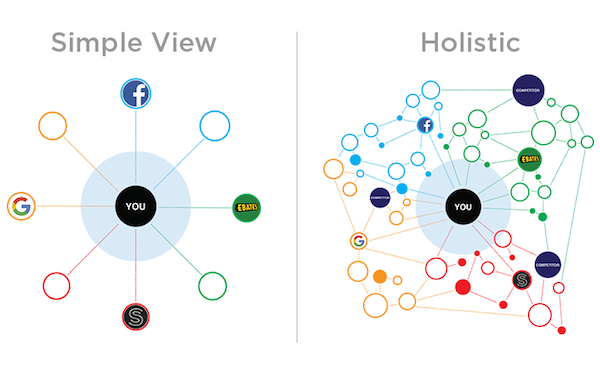Josh Jones-Dilworth wrote a couple of great columns about data and marketing on Mashable.com, Marketing in 2010: It’s All About the Data and How Data Will Impact the Way We Do Business.
In the first article, he makes the case for data as a marketing vehicle:
In the near term, learn to think of data as an asset, and be creative. Data shapes conversations and markets. But data doesn’t come to you — organizationally, the gathering, filtering, curation, visualization and publishing of data will in many cases require a reorientation of the marketing function and its relationship to other roles, but it is well worth it.
What is happening is that companies large and small are starting to turn on to the idea of the data as an asset — and not only that, but a marketing asset — one that can be used to shape discourse in ways that no number of retweets ever can.
He also has a terrific section on metadata, which just to give you a taste of his position:
The core thing to understand about metadata, especially if you’re not technical, is that eventually, marketing will no longer be something that happens based on top of data, and the insights gained therein. It will happen literally inside the data, as a constituent part of it.
Well said! The second article is a follow-up, further championing the future of data in the limelight. (He also kindly quotes my article on semantic marketing — hard to believe that was written almost two years ago now.)
I won’t reproduce the columns more here — click through to Mashable to read them in full — but I will repost the comment I made to his second article, after reading some of people’s reactions:
The way in which we’ve dealt with data in our lives and our businesses up to now has been sort of haphazard at best. As humans, we have an amazing set of innate abilities, but intuitively working with data is, alas, not one of them. So there are plenty of stories, such as were related in the comments here, about using data to justify anything, muddy the truth, and abuse privacy.
So naturally, there’s some trepidation about elevating data even further.
But I contend that the “data web” of the near future will be something qualitatively different, not a linear extrapolation of the role of data today.
As an analogy, picture the web back in 1993. It was pretty primitive, mostly anti-commercial, and only a handful of hacker-types knew how to build things with HTML. At that point, it would have been difficult for most of us to imagine what it would become within the next 10 years. That millions of us would now be effortlessly creating and interlinking content and services — and that billions of us would be using it throughout our lives as smoothly as we consume electricity — is nothing short of astounding.
It took a lot of imagination, experimentation, and entrepreneurial hutzpah to get there. But what a fantastic journey it’s been. I’d encourage folks to open their minds to such a Renaissance with data and the web.
The data web won’t be nirvana — certainly the web we know and love today isn’t. But like the web, I believe the positive will outweigh the negative.



Scott,
as always, a great post that provokes a lot of thought. What is your take though, on the difference between content and data when it comes to the perspective of the viewer.
Right now, as you point out, technology has made it very easy for us, as unsophisticated users, to create and share great content. We don’t need to understand or care about any of the underlying HTML, we just need to care about our words.
Data could conceivably be made as easy to link, analyze, and share, without needing to care about databases or statistical algorithms. However, data is not content… and either the viewer or the presenter needs to add some significant interpretation and thought to it in order to turn it into true insight.
Will a “data web” not just serve to make the difference between “data” and “insight” that much more glaring?
Thanks, Steven.
You raise a number of great points. We often think of “content” as something that goes directly from creation to consumption without too many intermediate steps. In truth, it’s a little more complicated than that, even with HTML and network mechanisms fully abstracted. For instance, SEO folks work hard to place and position content, and search engines such as Google work hard to organize and rank content according to consumer interest.
But still, the core experience seems straightforward to us: someone writes an article, and then other people read it.
“Data” is a little more tricky, as it has different properties in different phases — I’m thinking of a gaseous, liquid, solid type of analogy.
If we start with “raw data” — how that data comes into existence in the first place is another fun topic, but let’s take it as a given for now — then I see it passing through maybe 9 different phases:
1. Raw data.
2. Structured data.
3. Tagged/linked data.
4. Validated data.
5. Distributed data.
6. Application-ready data.
7. Application-embedded data.
8. Reports, presentations, etc.
9. Human insight.
All of these phases are optional. I think one of the benefits of the “web of data” movement is that phases 3-6 should become a lot more common, helping elevate data out of silos. To the degree that this is based on semantic web and microformat standards, it will be a lot easier for software to handle many of these phase changes for us. So ultimately, like with the web, the far majority of users will work at the application level or higher.
That being said, I think you’re right: the web of data is going to be a galactic battle between order and chaos, between meaningful and meaningless.
The chaos of having data more accessible and shareable is that the total quantity of data is going to mushroom exponentially. The order, however, is that if it’s tagged and linked properly — and if validation services are available in key domains — then software should be able to help a lot more with unlocking its potential energy.
Just as Google is fighting “content farm” spam today, it’s not a given that order will triumph over chaos in the visible web or the data web.
But I suspect it may be the defining battle of our careers.